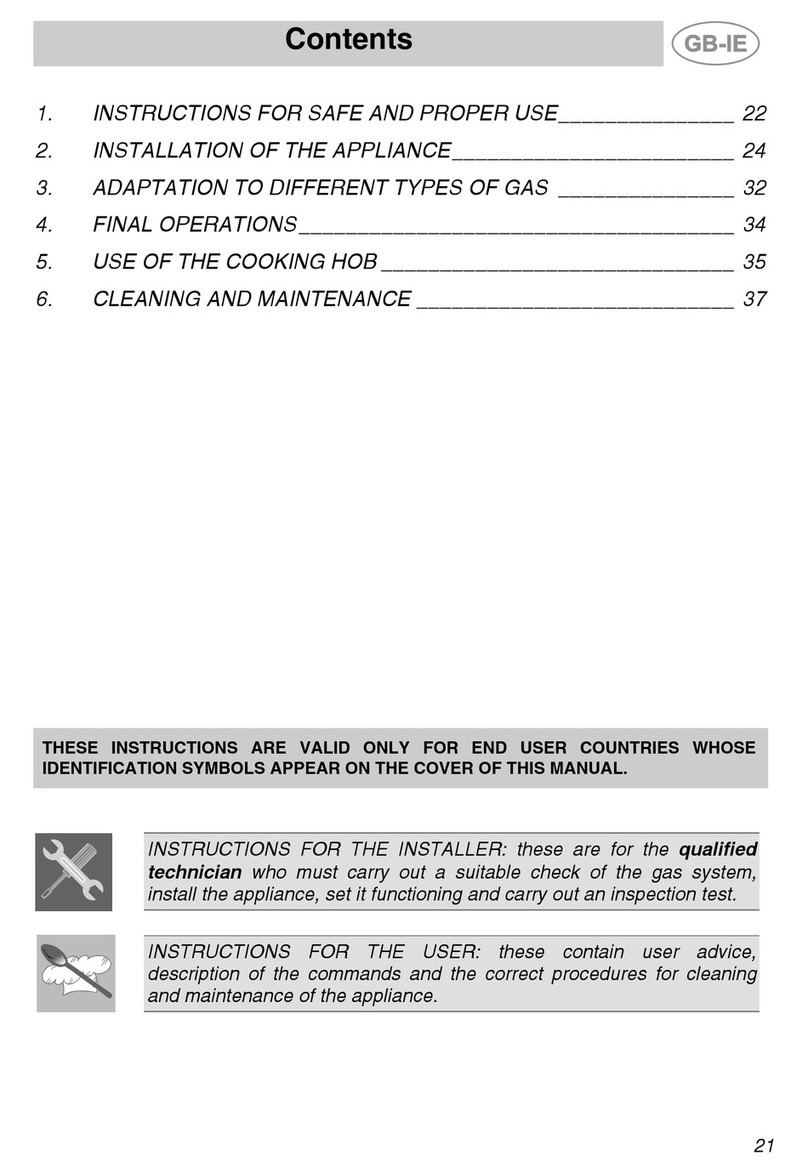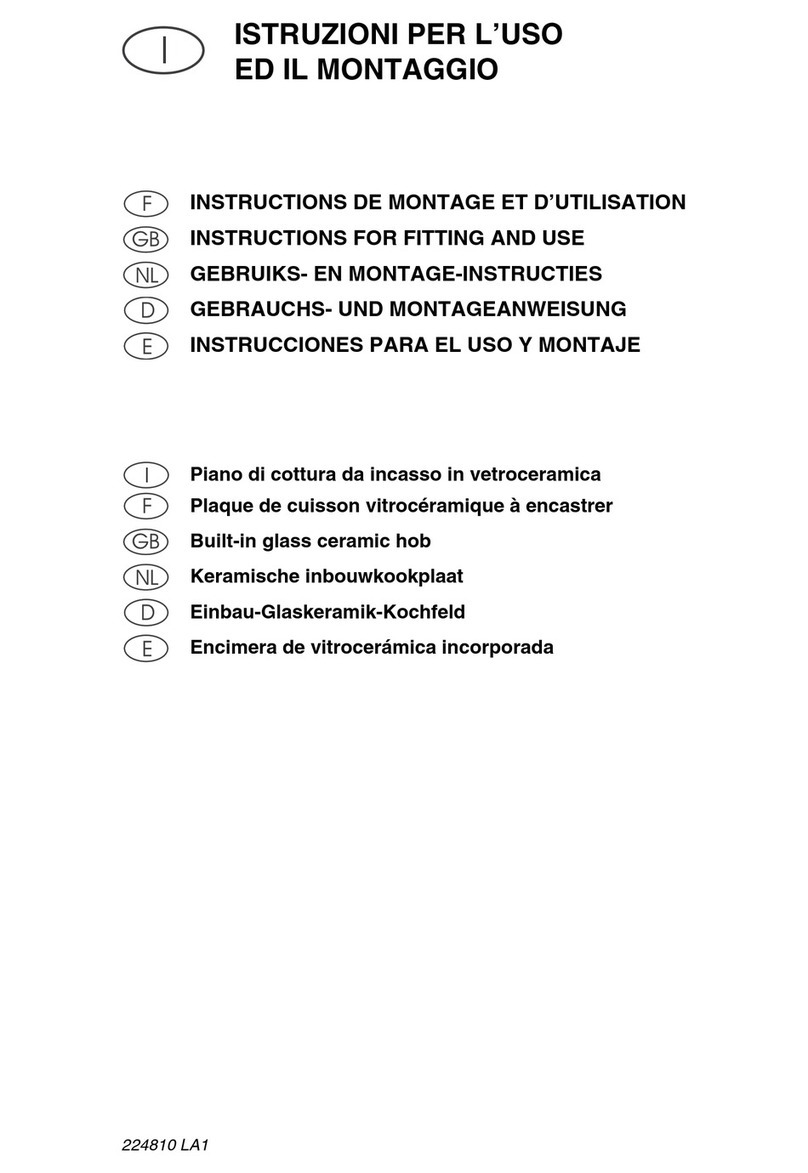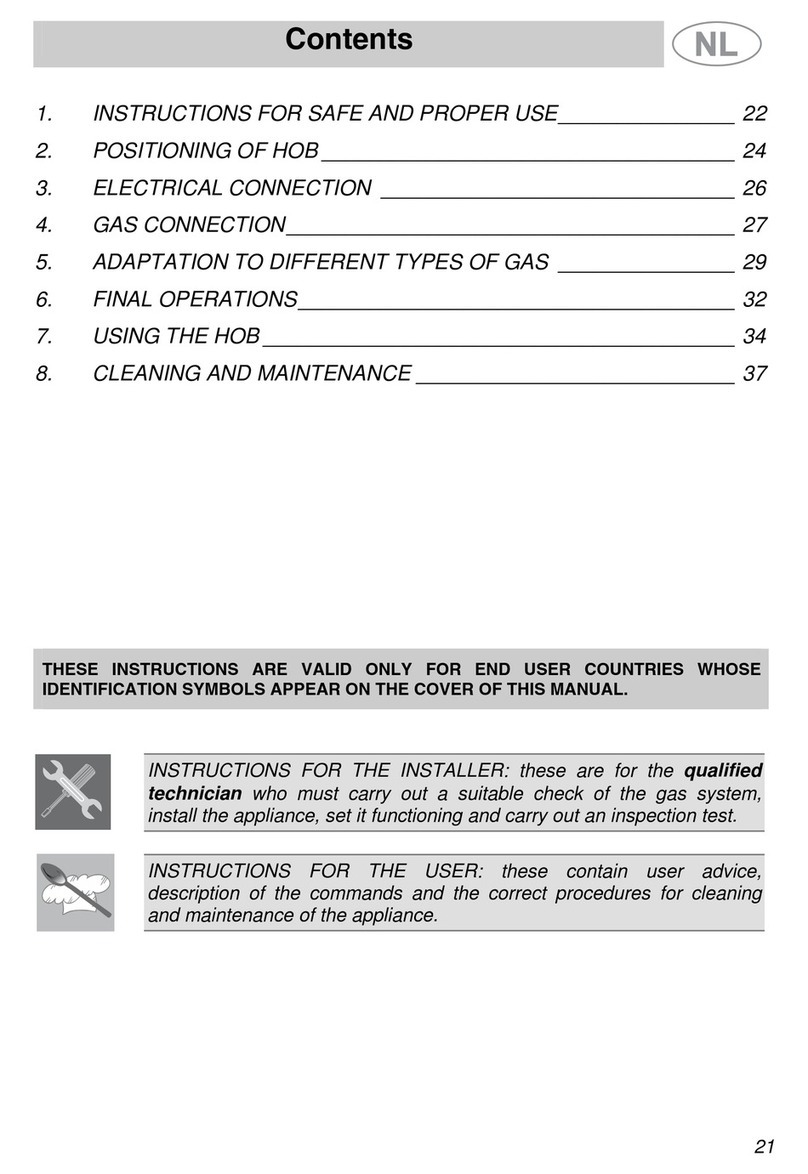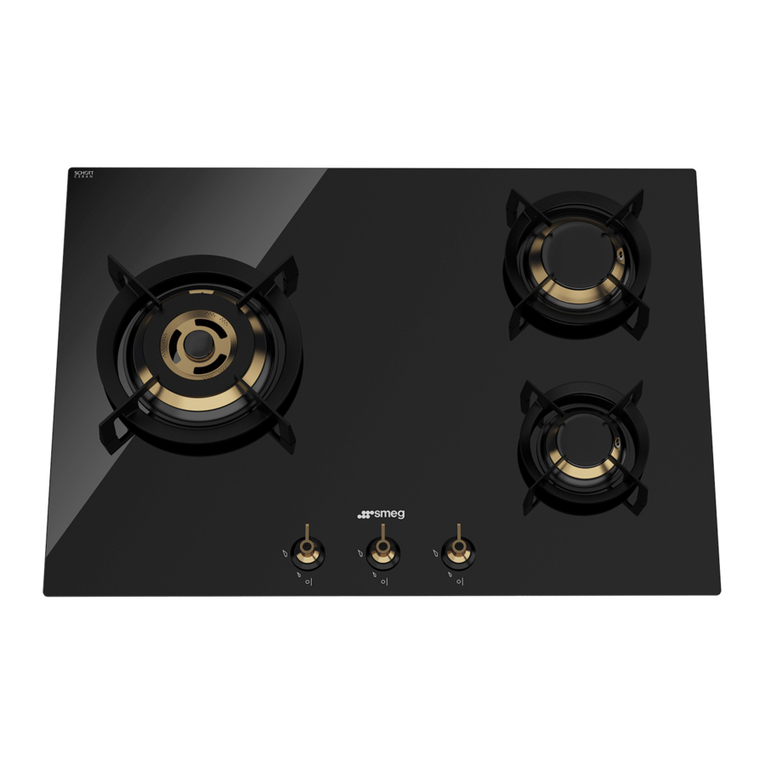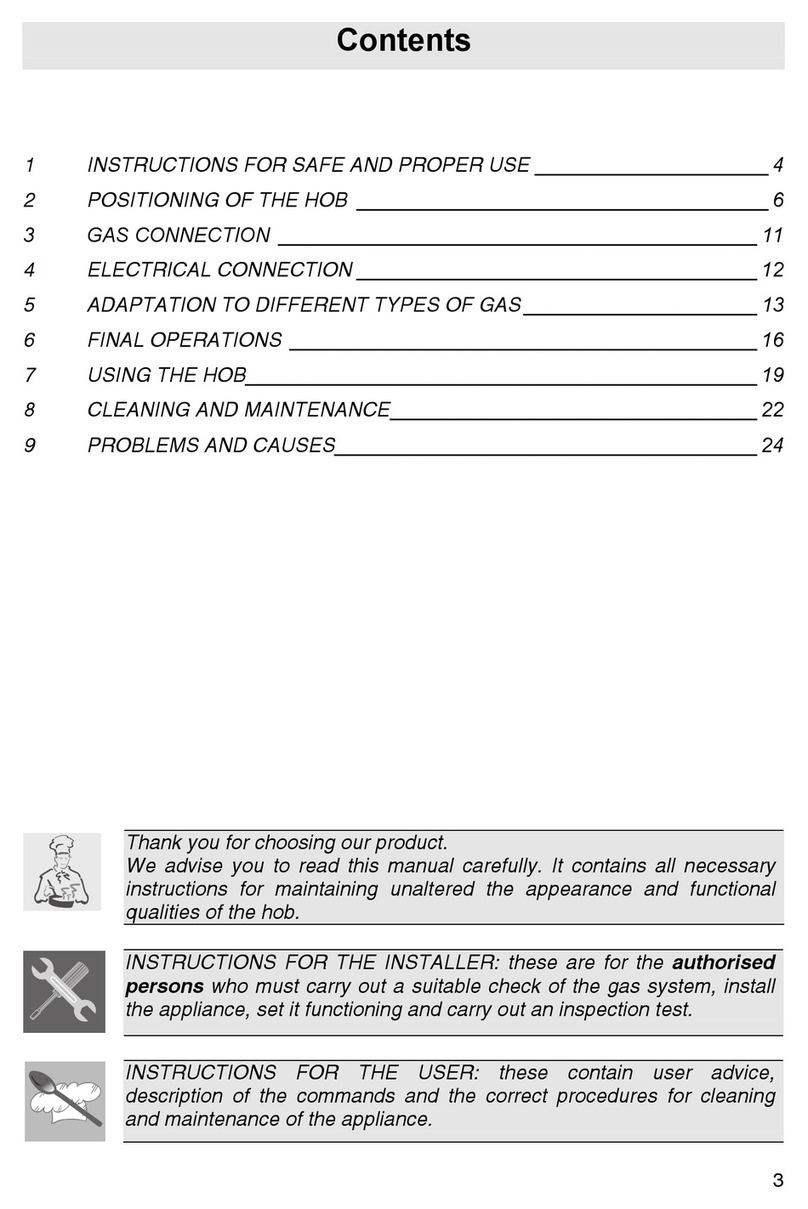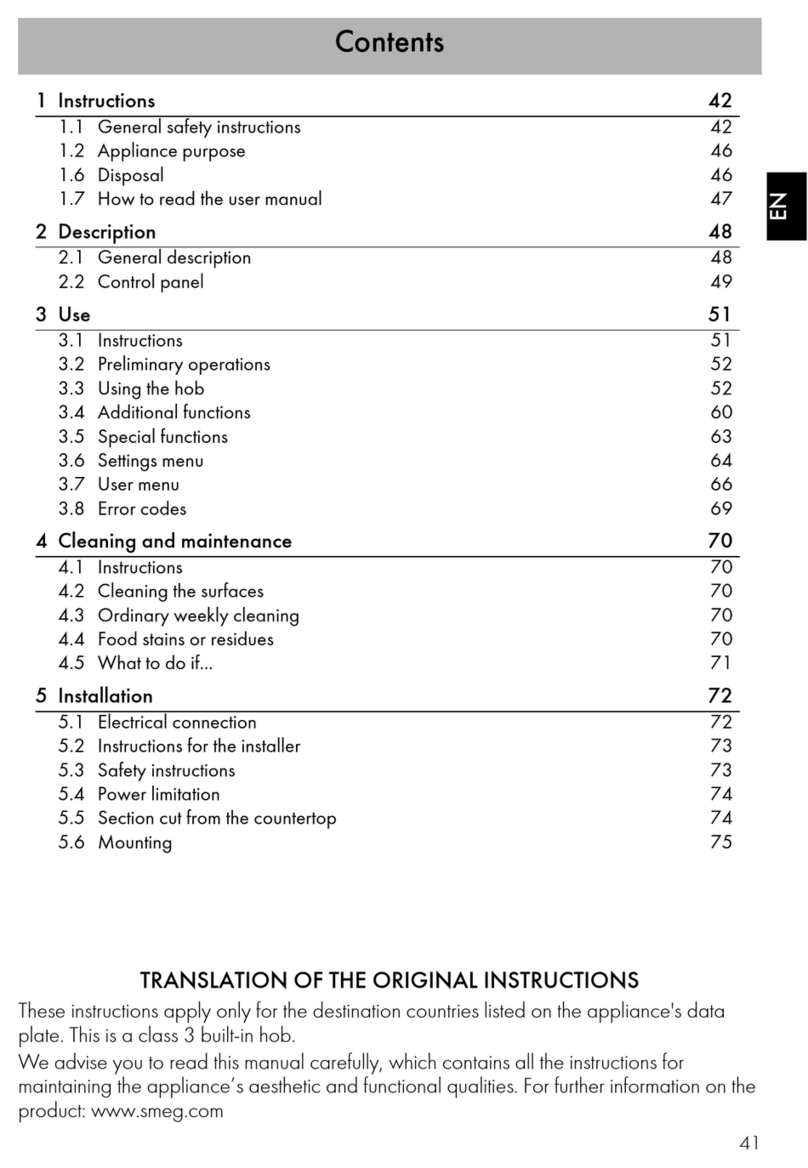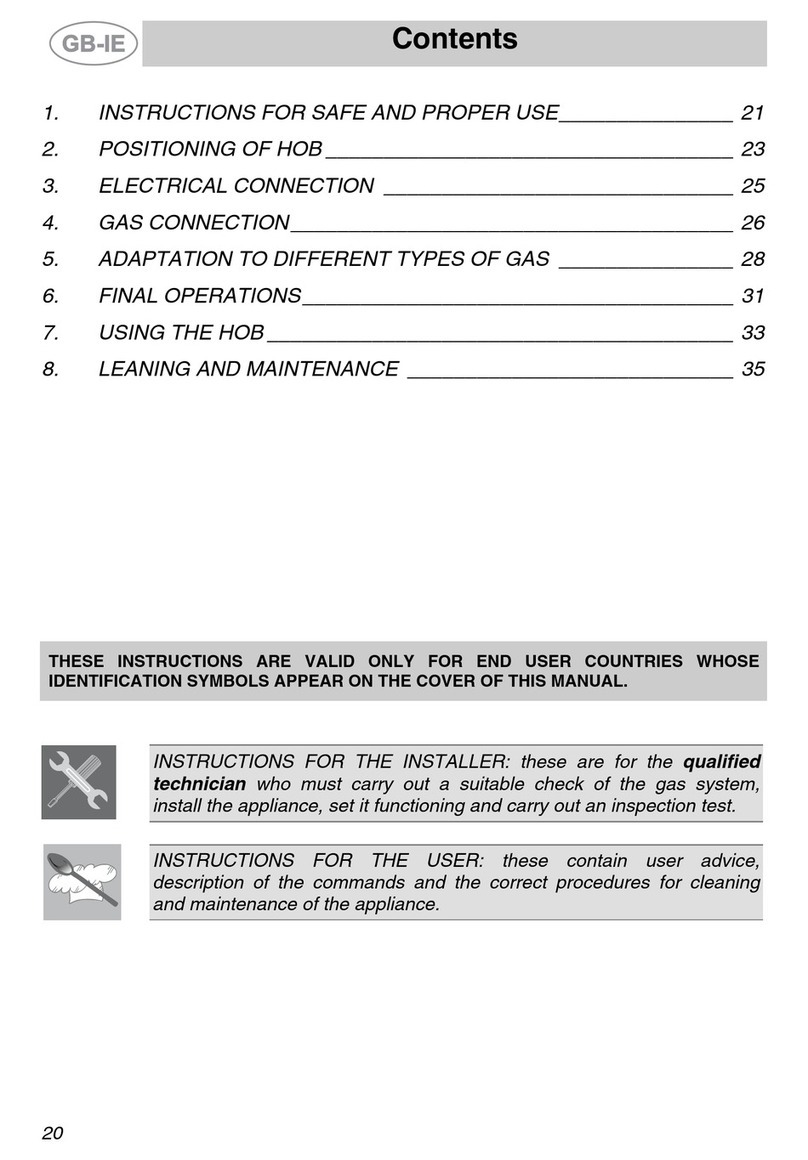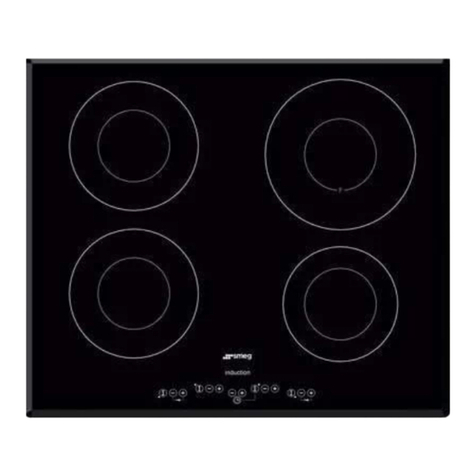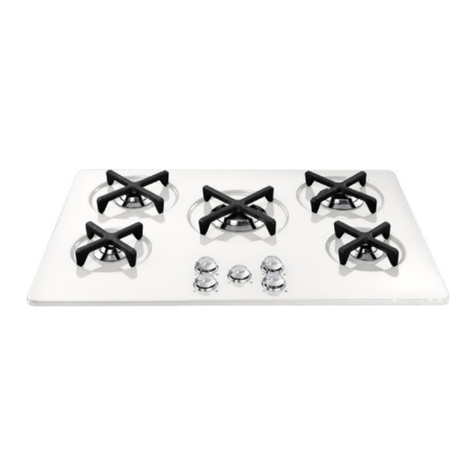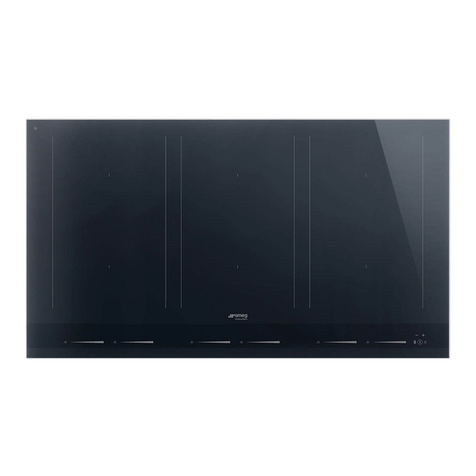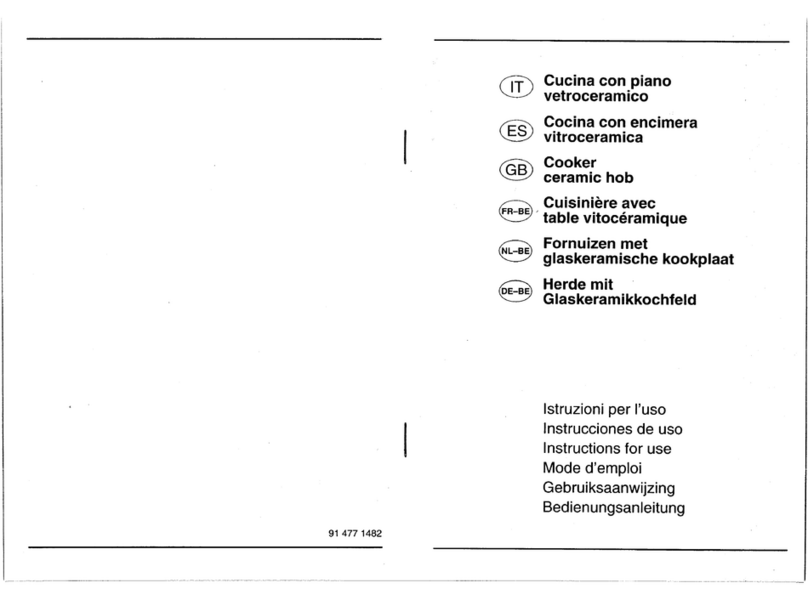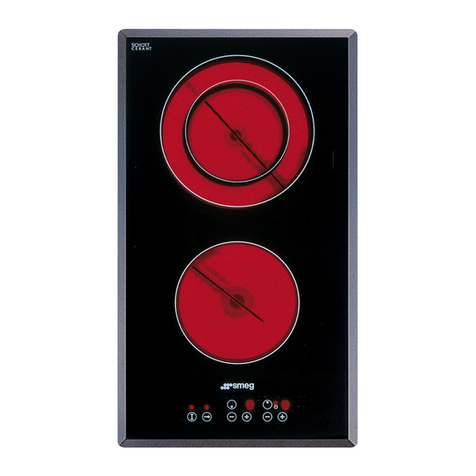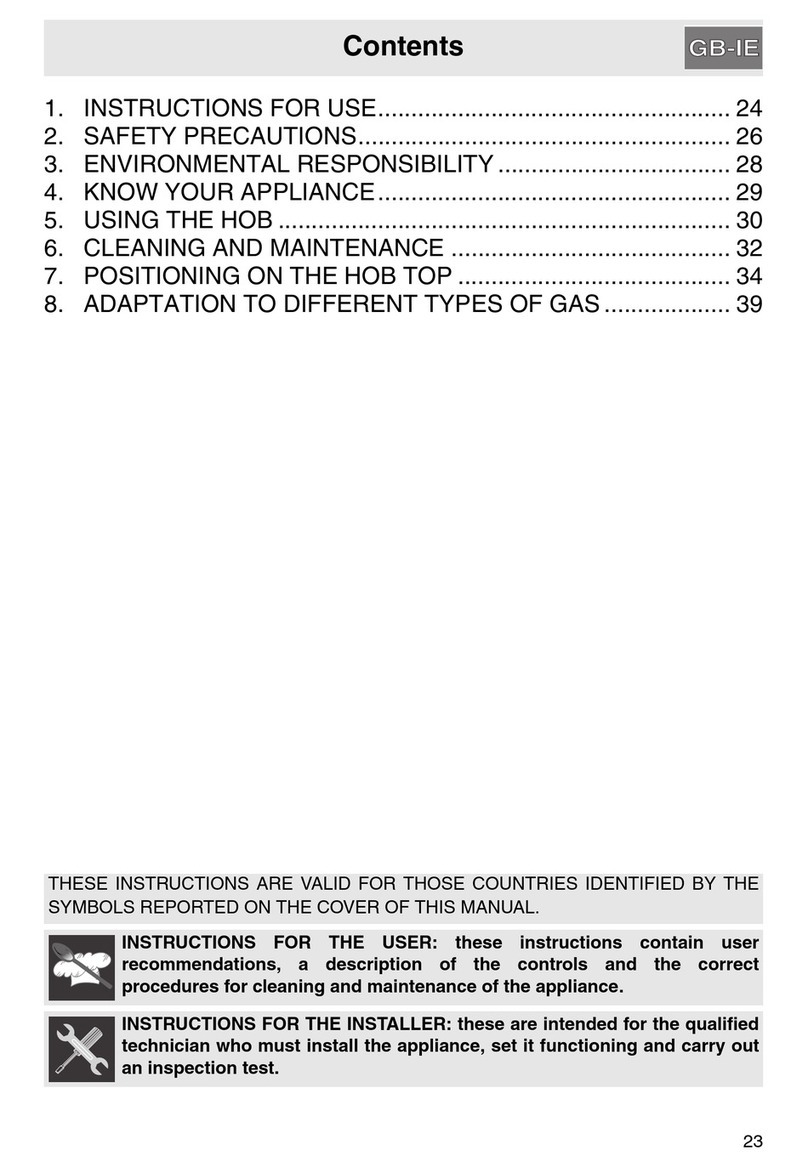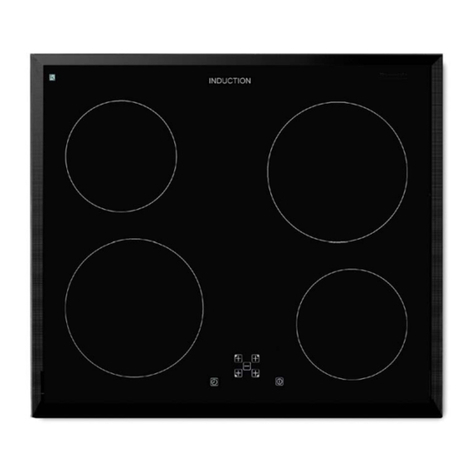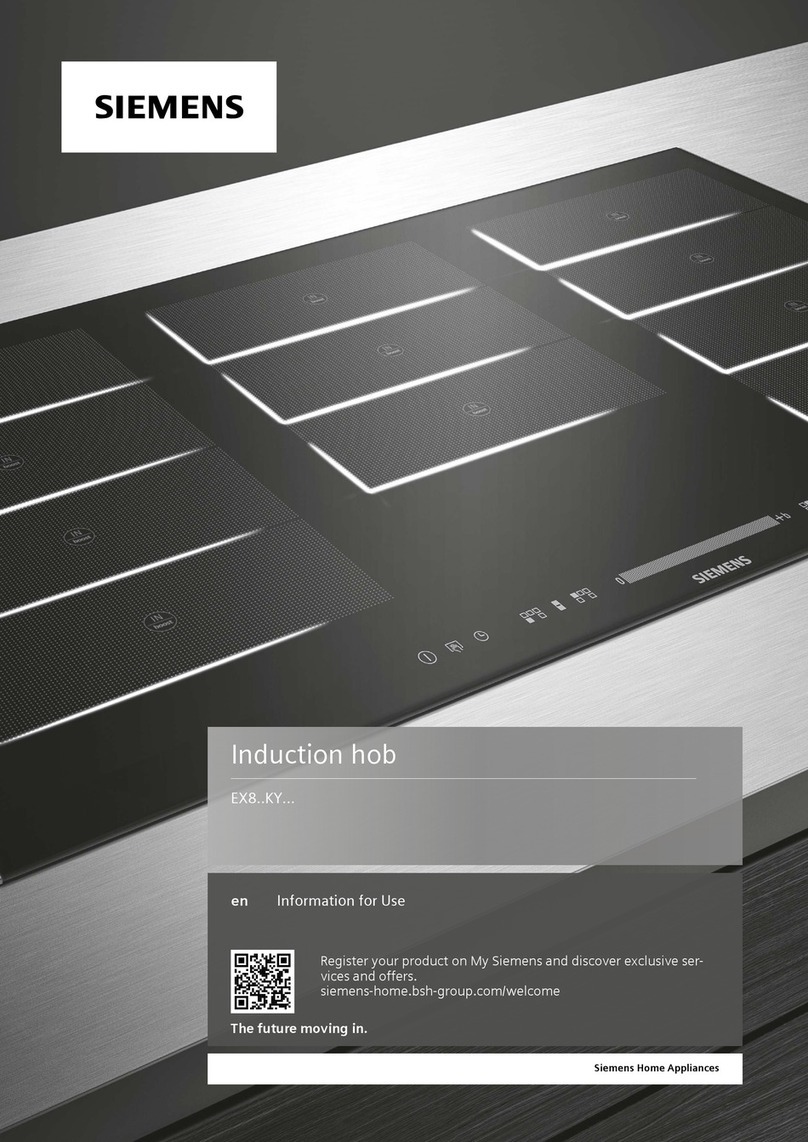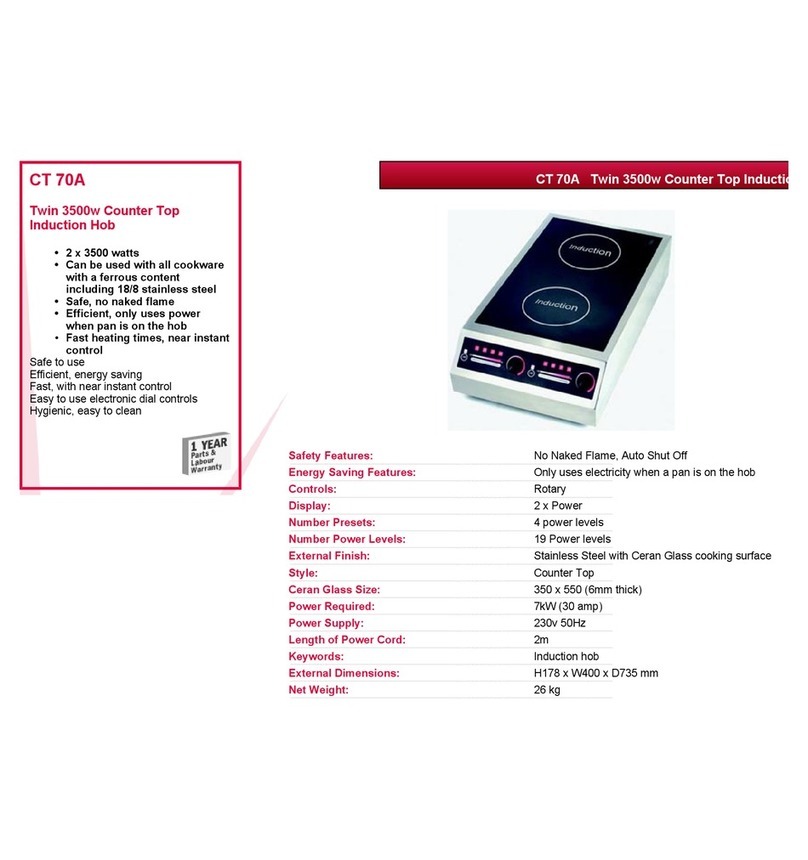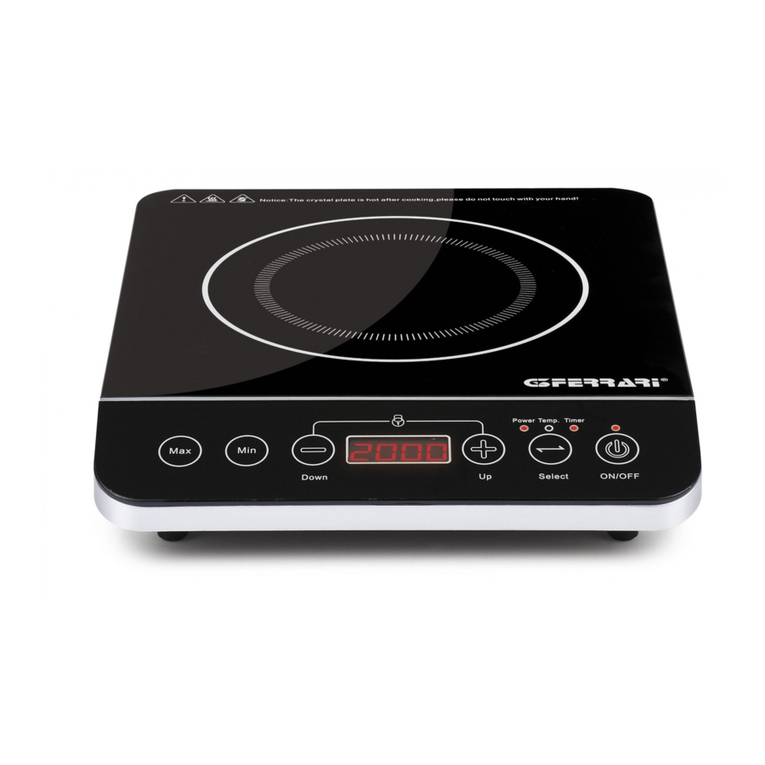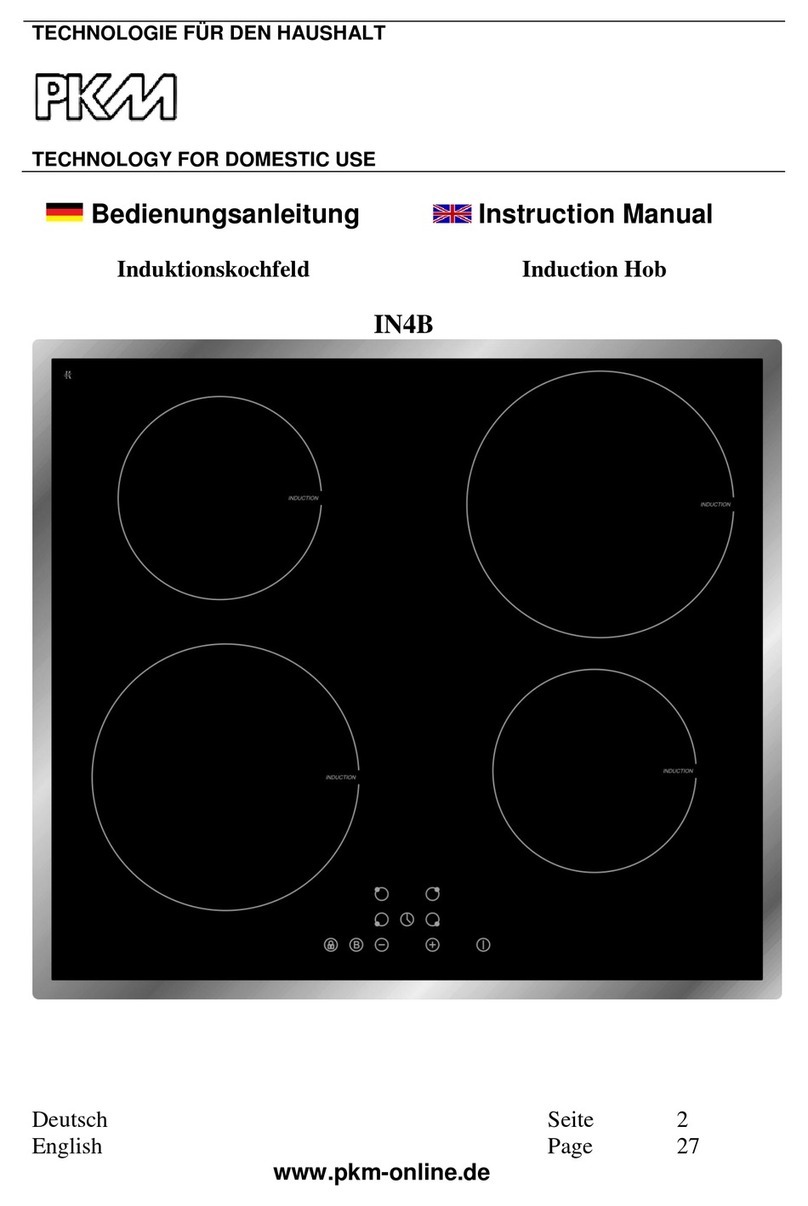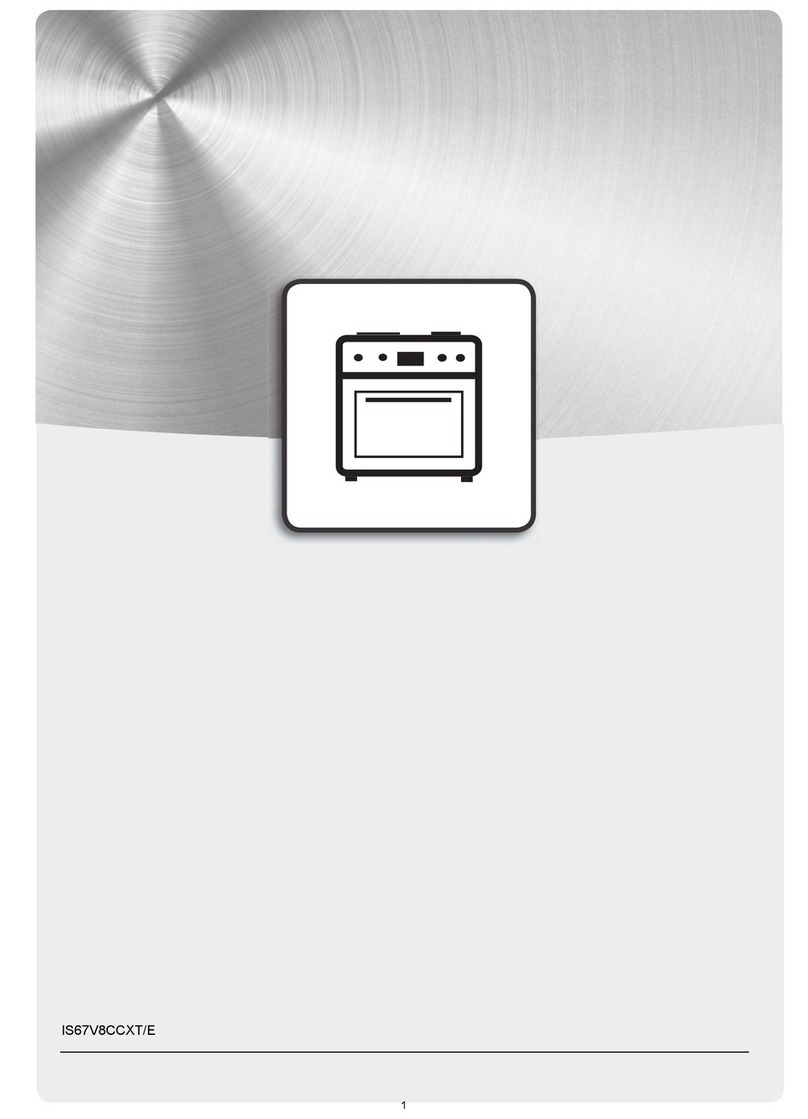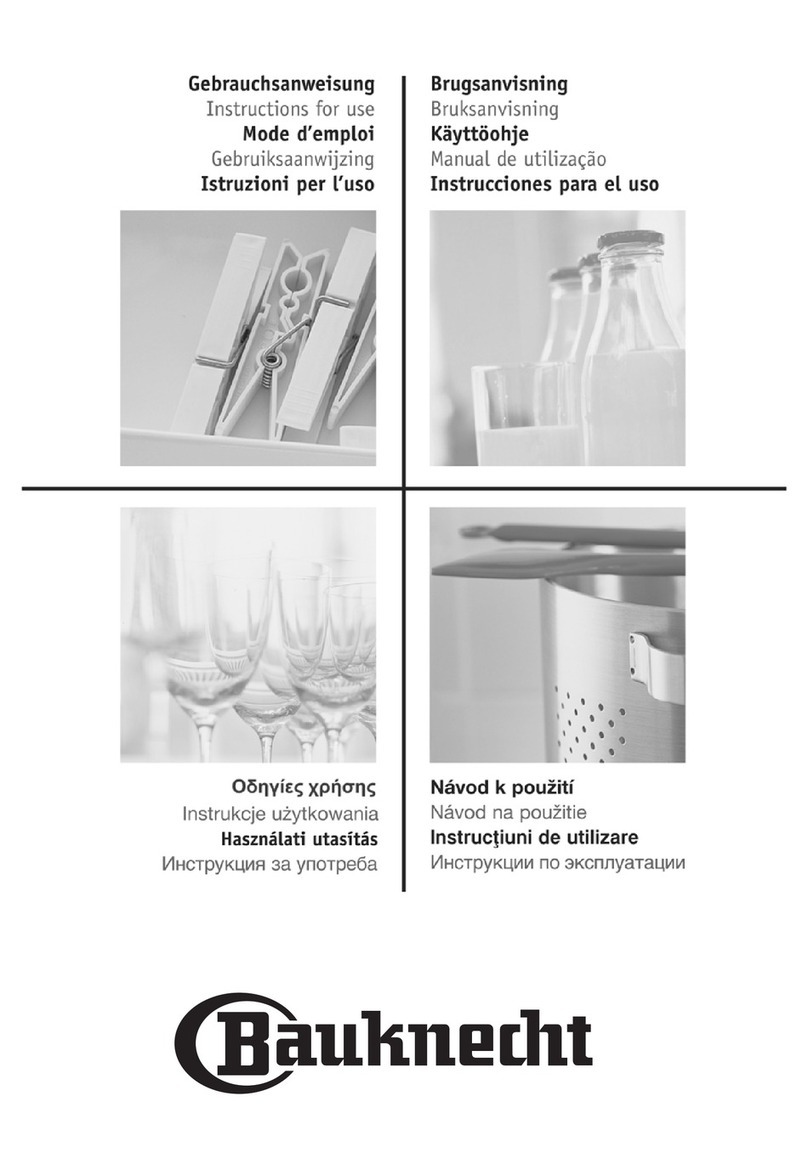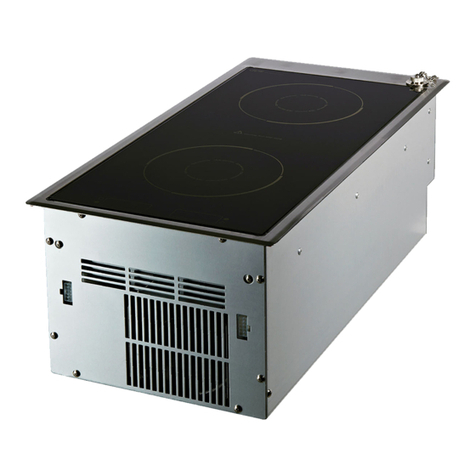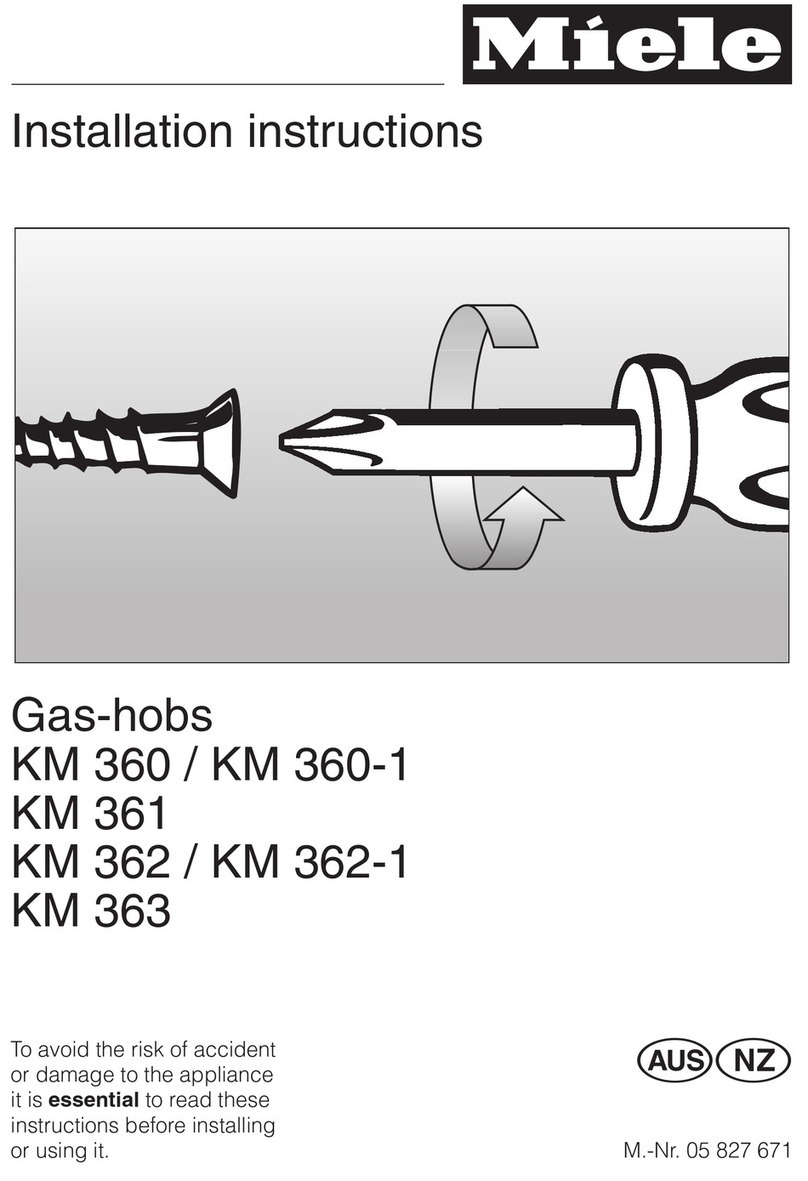
Instructions
38
• Take care not to spill acid
substances such as lemon juice or
vinegar on the hob.
• Do not put empty pans or frying
pans on switched on cooking
zones.
• Do not use steam jets to clean the
appliance.
• Do not use rough or abrasive
materials or sharp metal scrapers.
• Do not use cleaning products
containing chlorine, ammonia or
bleach on parts made of steel or
that have metallic surface finishes
(e.g. anodizing, nickel- or
chromium-plating).
• Do not use abrasive or corrosive
detergents (e.g. scouring
powders, stain removers and
metallic sponges) on glass parts.
• Do not wash removable parts
such as the hob pan support grids,
flame-spreader crowns and
burner caps in the dishwasher.
For this appliance
• This appliance must not be
installed in a boat or caravan.
• The appliance must not be
installed on a pedestal.
• Position the appliance into the
cabinet cut-out with the help of a
second person.
• To avoid potential overheating,
the appliance must not be installed
behind a decorative door or a
panel.
• Always use any necessary/
required personal protective
equipment (PPE) before
performing any work on the
appliance (installation,
maintenance, positioning or
movement).
• Before performing any work on
the appliance, switch off the
power supply.
• Have qualified personnel carry
out installation and assistance
interventions according to the
standards in force.
• Have the gas connection
performed by authorised technical
personnel.
• Installation using a hose must be
carried out so that the length of the
hose does not exceed 2 metres
when fully extended for steel hoses
and 1.5 metres for rubber hoses.
• The hoses should not come into
contact with moving parts and
should not be crushed in any way.
